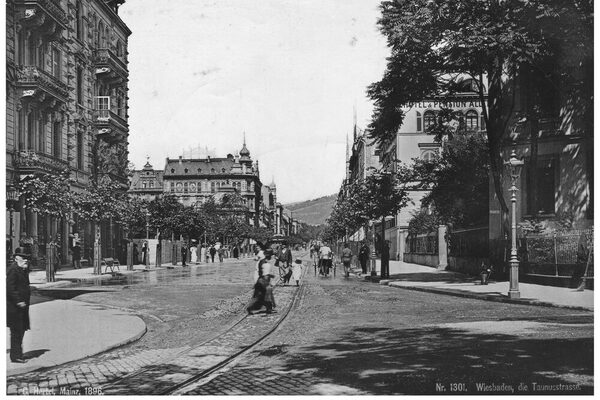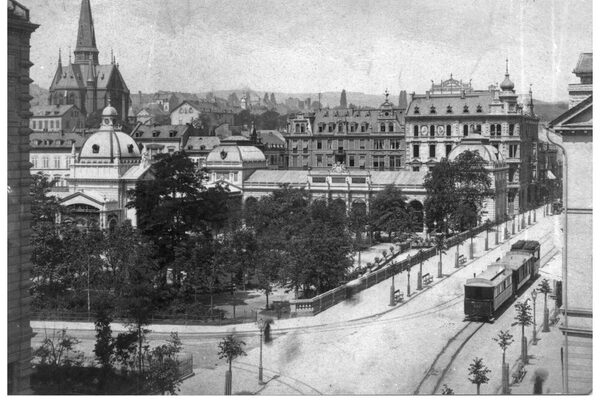Taunusstrasse
Taunusstrasse, which was laid out in 1818 as a promenade road in place of the "Neuer Sonnenberger Weg" and as the north-eastern boundary of the historic pentagon, initially stretched from Wilhelmstrasse to Röderstrasse. It was only after 1850 that it was extended to the Nero Valley, with this new section still bearing the name Elisabethenstraße until around 1900. Today, Taunusstraße connects Wilhelmstraße with Nerotal.
The development of Taunusstrasse initially took place on the north side, the mountain side, between Geisbergstrasse and Röderstrasse, and was largely completed by 1826. Consisting of detached, two-storey houses in the simple forms of classicism, it is largely lost today. Due to the Schwarzbach stream coming from the Nero valley, the promenade was moved to the south side, the valley side, which was initially not built on.
Following the canalization of the Schwarzbach between Röderstraße and Saalgasse, development also took place here in 1843-57. Spacious, three-storey residential and commercial buildings were built for the upper middle classes, now in late neoclassical style. The older houses on the north side were subsequently "modernized" or replaced by new buildings. The building at Taunusstraße 59, the former eye clinic, for example, has been preserved from this period. The street section between Wilhelmstrasse and Geisbergstrasse was also completely built up until 1890. From 1890 until the 1960s, a striking domed building stood at the beginning of Taunusstraße, which became one of the first cinemas in Wiesbaden in 1908.
The attractive location of Taunusstraße attracted many spa guests, and numerous guesthouses and hotels were set up in existing buildings or newly built, including such luxurious establishments as the Hotel Rose, especially around 1900.
To this day, Taunusstraße is one of the best-preserved streets in the city; war damage mainly affected the first section of the street and the Kureck. The design of its façades shows a varied juxtaposition of all varieties of classicism and historicism through to Art Nouveau.

